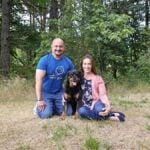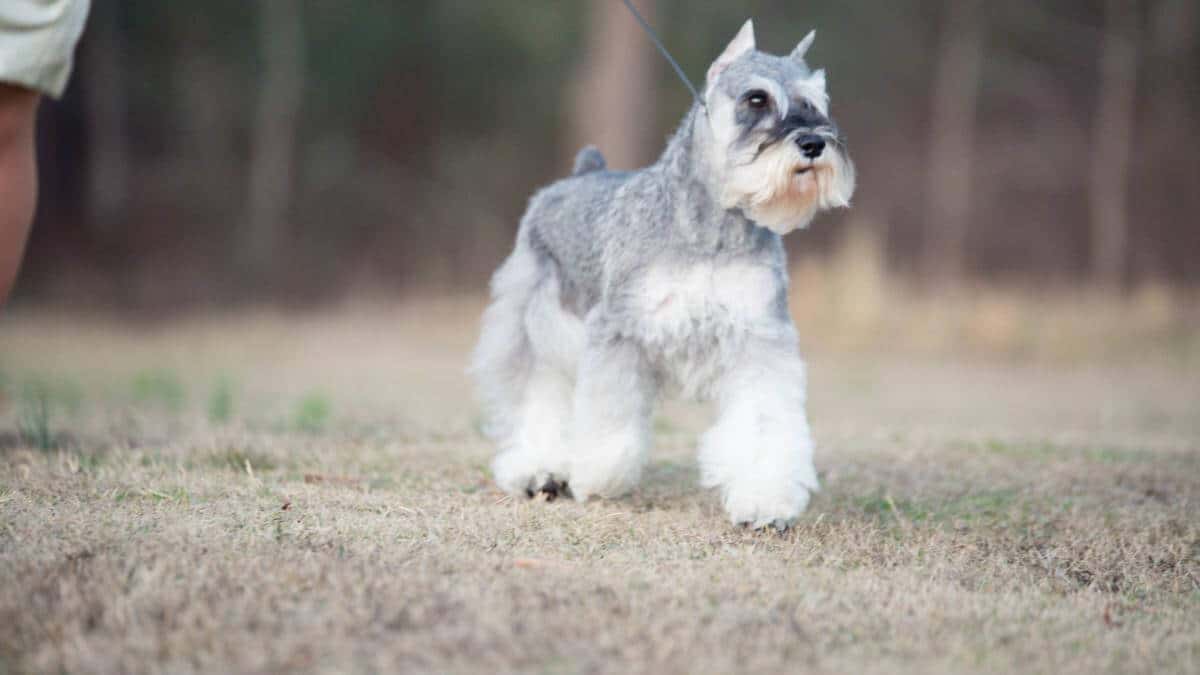


Home » Judging the Miniature Schnauzer

This article was originally published in Showsight Magazine, July 2014 issue.
Part TerrierPart Working Dog Throughout the years I have given seminars to prospective judges and have talked privately to many judges regarding my breed. Most tell me that it is a hard breed to judge, or at least harder than they had expected. I have been told that it is the description of a Miniature Schnauzer being part Terrier and part Working dog that confuses them the most. I hope this article will help in pointing out some of those major differences. I would also like to point out areas of hair that can fool the eye and how to look at outlines differently. I did not cover all the points in the Miniature Schnauzer Standard, only those that I feel need addressing at this time and for the sake of this article. For the purposes of this article, the Wire Fox Terrier shall be the example of “Terrier Type”. I realize that there are many Terrier breeds with completely different proportions and movement styles, however I do believe that the Wire Fox Terrier is what most people and the authors of our Breed Standard, think exemplifies the word “Terrier”. And of course the “Working Type” breed will be our cousin, the Standard Schnauzer.
Te Miniature Schnauzer is part Working and part Terrier in their type, movement and temperament. Te first paragraph in our Standard states that the Miniature Schnauzer is robust and nearly square in proportion. Robust as in sturdily built, like the Working Dog, deep chested with well sprung ribs, well muscled thighs and ample bone not at all “fine” in any respect. Not long in loin, but more square, “Te height at the withers is almost equal to the length of the body—of importance here is that the length of body is measured not from the withers to the point of the tail, but from the sternum to the butt, slightly behind the tail. So, his body is built more like his cousin, the working dog, however it is shorter in back. (Try to look at the underline of a dog to help determine length of back.) It is these first descriptions of general Type and proportion that are most important and can be seen in the first line-up of the dogs. Type and proportion are of the utmost importance and is the first aspect of the dog to be judged, all else is secondary.
Shaped like a shoe box, rectangular, not square, with flat planes and a slight stop, a muzzle at least as long as the skull-like a Terrier, but, like the Working Dog, it should be strong and never fine.
Small, dark, almond shaped with a piercing look-like a Terrier.
Of general Terrier Type: Well arched, which means that it must be long enough to achieve that arch. Please do not be fooled by clever grooming in this area. It has become increasingly popular to hide a short or ewe neck with a mound of hair that is longer at the neck to shoulder transition area than it is at the top of the neck and back. Tis trick makes the neck look longer and the back look shorter, so check that area for thicker longer hair.
More like the Working Dog: straight and strong with good bone
A bit of both types: they should be well muscled, like the Working Dog, however they should be wide in stance and well angulated, more in the style of the Terrier
Movement should be judged in two components, the first being the test of ‘soundness’, which to me is coming and going. Coming, straight forward with elbows close to the body, neither too close not too far apart, like the Working Dog. Going, hind legs straight, hocks lifting, with air to be seen between them, never too close, more like the Terrier. Tey should not single track like the Working Dog. Let me add here that the scissored legs of a Miniature Schnauzer can both compliment a sound dog or disguise an unsound dog. Be mindful of excess hair on any part of the legs. After passing the test of soundness, I would then judge the side gait of the dog. Like the Working Dog, he should have good front reach and a strong rear drivenot at all like the stilted Terrier. Topline should stay level, head carried in a somewhat up position, not straight up, this is not aerodynamic, but not totally down either. He should cover ground effortlessly going from point A to point B in the least amount of footfalls. Don’t be confused by a dog that is run around the ring, going very fast, but using too many steps to get there.
We only have three colors, Salt and Pepper, Black and Black and Silver. Te Salt and Pepper coat can be many shades of Gray even a bit of cinnamon coloring is allowed. Salt and Pepper hair must be predominately (at least 51%) banded hair, the Salt and Pepper dog should never look like one solid color. In a “showable” coat, the coat is made up of a small amount of soft undercoat, which cannot be seen until you lift the wire hair. Te majority of hair should be a hard wiry coat—this is very much a Terrier coat and as such, a soft coat should be heavily faulted, just as you would fault a soft coated Wire Fox Terrier. Te furnishings are fairly thick and are not wiry like the Terrier, but scissored like the Standard Schnauzer. A bit of advice on Coat conditioning, which is different from the Terrier and the Working Dog. Miniature Schnauzer coats can be either section stripped (a process that takes 11 weeks until “showable” and all the wire hair is tight and crisp, or it can be rolled (a bit of hair stripped every week making the dog “showable” always) EXCEPT—all Miniature Schnauzer coats are not suitable for rolling, some have too much undercoat and not enough wire hair, those coats are soft, not banded enough in the case of a Salt/Pepper and not up to the standards of a “showable” coat. Dogs with that type of hair should be penalized. Tose Miniature Schnauzers with proper thick wire hair can be rolled successfully and have the same look and feel of a ‘sectioned’ coat. Te way in which a Miniature Schnauzers’ coat is stripped has absolutely no bearing on your judgement of coat quality, so if the exhibitor tells you that the coat is a bit softer because he is being rolled—that is no excuse.
Our Standard states that the Miniature Schnauzer is alert and spirited, like the Terrier, yet obedient, intelligent and willing to please, like the Working Dog. Never overly aggressive like some Terriers, but never timid. Because we compete in the Terrier group, I think it is important that the Miniature Schnauzer show his Terrier spirit. He should be lacking no amount of self confidence, exactly like the Terrier. We like to see our dogs ‘sparred’. You should expect males to ‘own their ground’, stacking and making the most of themselves when facing off with another male. I would fault a dog who refused to do this with another dog and instead looked to his Handler for bait. As for females, we liked them sparred as well, however do not expect them all to respond like a male and do not fault them if they do not. We Breeders think that the Miniature Schnauzer is of course special. However, more importantly, he is unique in his make-up of these two groups of dogs, Te Terrier Type and the Working Type. It is this uniqueness that we hold dear and would like to see every judge understand and judge accordingly.